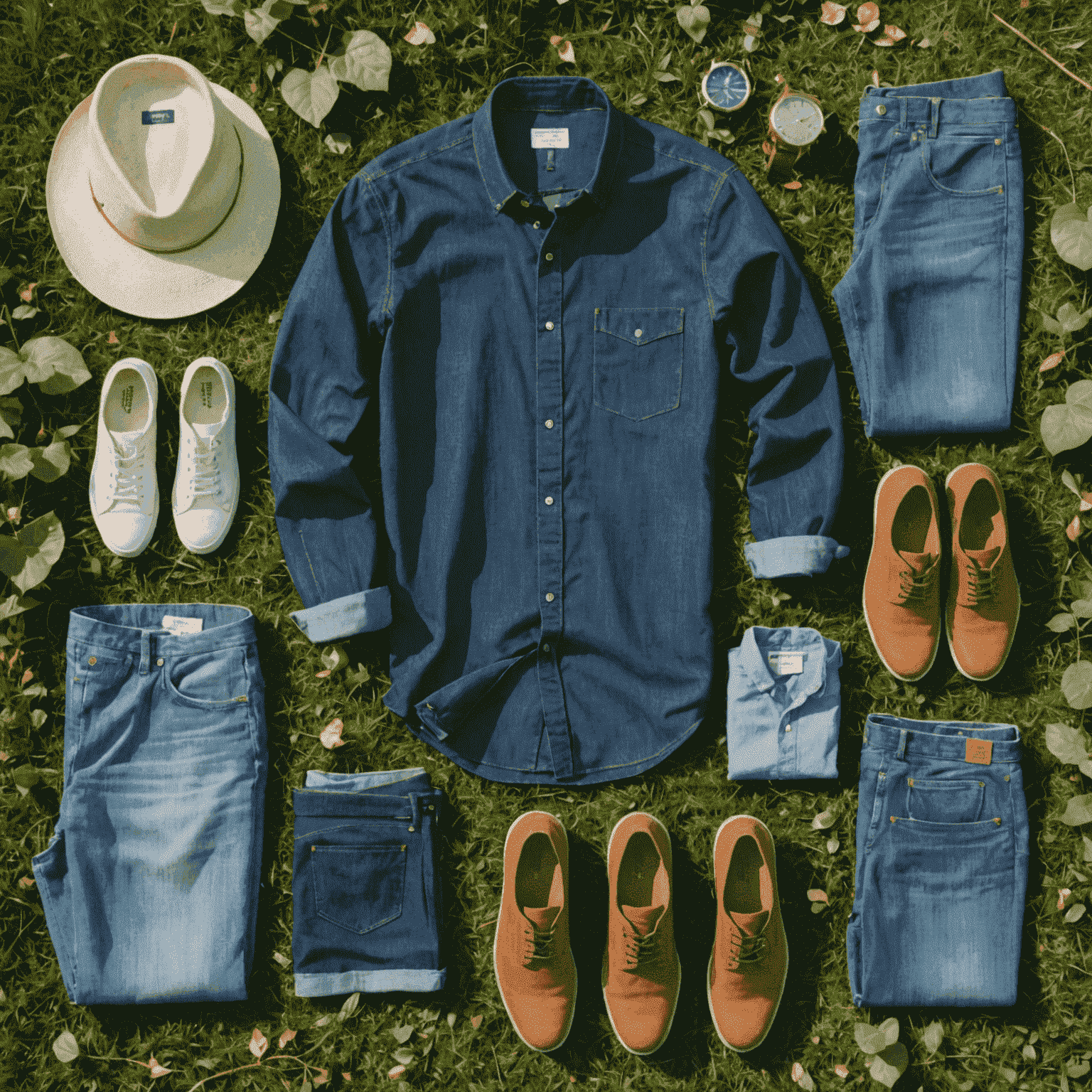Sustainable Style: Eco-Friendly Men's Fashion

In an era where environmental consciousness is paramount, the fashion industry is undergoing a significant transformation. Men's fashion, in particular, is embracing sustainability with open arms. This article explores the world of eco-friendly men's fashion, delving into sustainable materials, ethical production practices, and how to curate an environmentally conscious wardrobe.
Sustainable Materials: The Foundation of Eco-Fashion
The journey towards sustainable style begins with the choice of materials. Here are some eco-friendly fabrics making waves in men's fashion:
- Organic Cotton: Grown without harmful pesticides or synthetic fertilizers.
- Recycled Polyester: Made from post-consumer plastic bottles, reducing waste.
- Tencel: A biodegradable fabric derived from wood pulp.
- Hemp: A durable, versatile fiber that requires minimal water and no pesticides.
- Bamboo: Fast-growing and biodegradable, perfect for soft, breathable clothing.
Ethical Production: Beyond Materials
Sustainable fashion isn't just about eco-friendly materials; it's also about ethical production practices. Look for brands that prioritize:
- Fair labor practices and safe working conditions
- Transparent supply chains
- Local production to reduce carbon footprint
- Zero-waste or low-waste manufacturing processes
- Use of renewable energy in production facilities

Building an Eco-Friendly Wardrobe
Creating a sustainable wardrobe doesn't mean overhauling your entire closet overnight. Here are some steps to transition towards more eco-conscious fashion choices:
- Assess Your Current Wardrobe: Identify items you truly love and wear regularly.
- Adopt a Quality-Over-Quantity Mindset: Invest in well-made, timeless pieces that will last longer.
- Research Sustainable Brands: Look for companies committed to eco-friendly practices and materials.
- Embrace Second-Hand Shopping: Thrift stores and vintage shops are treasure troves for unique, sustainable finds.
- Care for Your Clothes: Proper care extends the life of your garments, reducing the need for frequent replacements.
- Recycle and Upcycle: When you're done with an item, consider recycling or upcycling rather than discarding.
Sustainable Style Staples for Men
Here are some eco-friendly essentials to consider for your wardrobe:
- Organic cotton t-shirts and button-downs
- Recycled denim jeans
- Hemp or linen blazers for a casual-smart look
- Bamboo socks and underwear
- Shoes made from recycled materials or sustainable alternatives like cork
- Accessories crafted from upcycled materials or ethically sourced wood

The Future of Sustainable Men's Fashion
As technology advances and consumer awareness grows, the future of sustainable men's fashion looks promising. Innovations in fabric development, such as materials made from agricultural waste or lab-grown leather alternatives, are opening new possibilities for eco-friendly style.
Moreover, the rise of circular fashion models, where clothes are designed to be reused, recycled, or biodegraded, is set to revolutionize the industry. Rental services and clothing swap platforms are also gaining popularity, offering new ways to refresh your style without the environmental impact of fast fashion.
Conclusion
Embracing sustainable style is not just a trend; it's a necessary shift towards a more responsible and conscious approach to fashion. By choosing eco-friendly materials, supporting ethical production practices, and building a thoughtful wardrobe, men can look great while making a positive impact on the planet. Remember, every sustainable choice counts – start small, and let your eco-friendly wardrobe grow naturally over time.